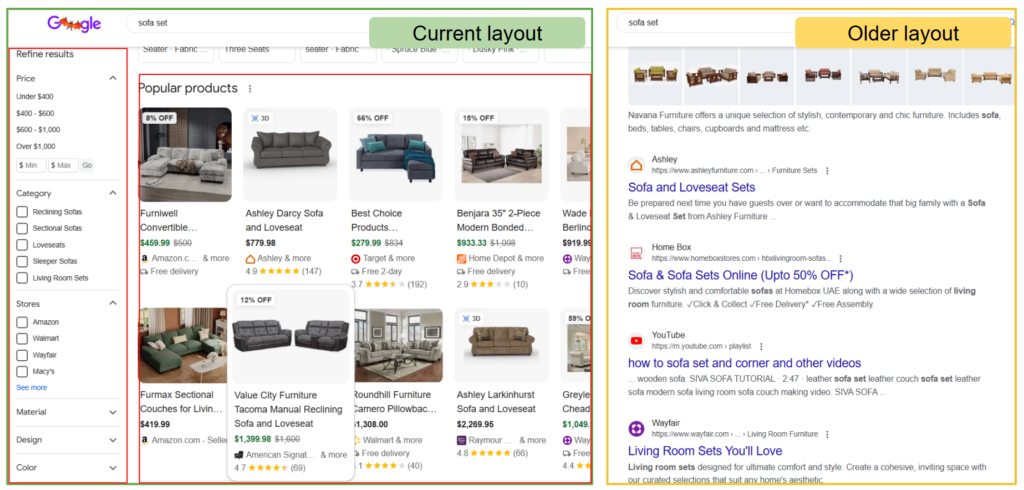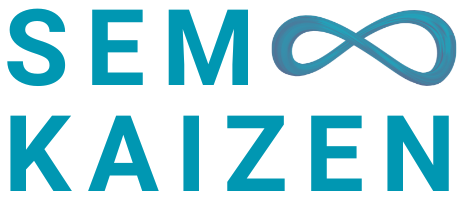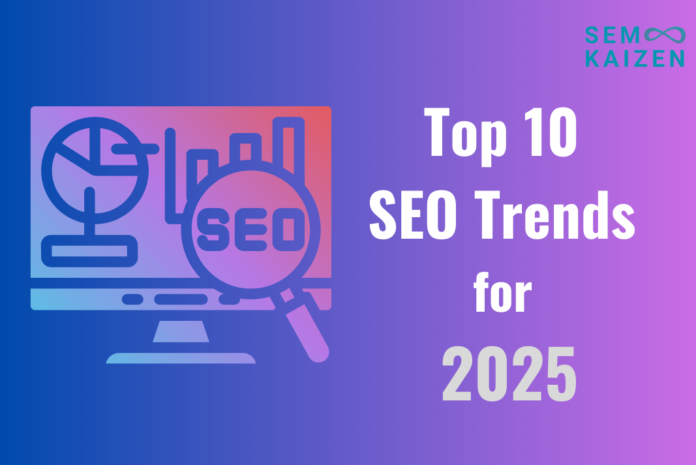SEO is evolving.
The last two years have brought significant disruptions to how SEO has evolved. In 2024, AI demonstrated its disruptive power in search, and this trend is expected to continue into 2025.
2025 will be a pivotal year for the future of SEO. With Amazon capturing a large share of product searches, TikTok emerging as a Google alternative, and AI chatbots taking over informational queries, search engine marketing will become an increasingly competitive game.
This doesn’t mean SEO is dead—that’s just a nihilistic view. However, the way we approach SEO is undeniably changing. In fact, SEO no longer means just Google SEO. It now encompasses GEO (Generative Engine Optimization), AI Overview Optimization, YouTube Optimization, Reddit Optimization, and more.
My Top SEO Trends for 2025
Here are my top 10 SEO trends for 2025.
1. AI Chatbots will continue to grow
AI Chatbots like ChatGPT, Claude, and Perplexity will continue to grow. According to Similiarweb, ChatGPT has overtaken Bing in terms of traffic.

AI chatbots can understand and address long-tail searches, an area where Google often falls short. They can also assist with homework, mathematical problems, and coding, where Google may not always provide accurate solutions.
This means that ChatGPT and other AI chatbots are better equipped than traditional search engines to meet queries with informational or educational intent.
2. AI in Search can impact traffic from Search Engines
Google has AI Overviews, Bing has Copilot and Amazon has Rufus – each providing AI-generated summaries integrated into their respective search engines.
Google AI Overviews is expanding beyond the US and is live in 100 countries. These AI-generated overviews function similarly to featured snippets but provide more context and depth. While they include citations and links, the actual click-through rates (CTR) for these citations remain unclear.
With AI Overviews occupying prime real estate on search engine results pages (SERPs), it’s crucial for brands to be featured in these answers. Mentions and citations not only enhance visibility but also boost brand awareness and discoverability.
SEO must evolve beyond the traditional ten blue links to optimize for AI-generated overviews as well.
3. Importance of Brand Salience as a Ranking Factor
I’ve always interpreted E-E-A-T (Experience, Expertise, Authoritativeness, and Trustworthiness) as brand salience and authority. If a brand is well-known within its niche, it’s likely to become the category leader, dominating the search results.
As Google intensifies its efforts to combat spam and AI-generated clutter on SERPs, the importance of brand salience will only continue to grow.
4. Emphasis on Visual Search
Amazon has always posed stiff competition to Google when it comes to product search. A staggering 50% of all product searches begin on Amazon.

In response, Google has been focusing on making the SERPs more visual, shifting the emphasis toward products to stay competitive.

Google’s Shopping Search requires optimization across:
- Product Snippets (Popular Products, More products, People also buy from, Top rated products, etc)
- Google Top Quality Store Badge
- Google Customer Reviews
- Google Shopping Graph
- Product Structured data
- Google Merchant Center Optimization
- Google Business Profile & Google Merchant center integration

Ranking on Product Snippets can give a CTR up to 40%, which is way more than the CTR from search results (2%-5%)
5. Complex Digital Touchpoints
The user journey from discovery to final conversion is no longer linear. With multiple channels and platforms available for discovering information, tracking and attributing what influences the final conversion has become increasingly complex.
For instance, a user might watch a TikTok video about a makeup product, search on Google for more details, explore Reddit or price comparison sites, and finally complete the purchase on the brand’s website.

Managing discovery and visibility across these diverse channels is challenging but essential. As a result, SEO must evolve beyond just Google to encompass other platforms like Pinterest, TikTok, Reddit, coupon websites, and more.
6. Focus on User Engagement Signals
User engagement signals are critical ranking factors. High engagement indicates Information Satisfaction (IS) and signals to search engines that the webpage is highly relevant to the query.
Insights from the USA vs. Google case and leaked Google Search API documentation reveal that Navboost—a click-based system—models clicks as a ranking factor. This system is closely tied to the Information Satisfaction score of a webpage.
Key factors contributing to high user engagement include:
- High Information Satisfaction value of the content
- Content matching the user intent (sometimes SERP intent)
- UI/UX that facilitates easy consumption and understanding of information
- Adherence to Core Web Vitals metrics, especially Largest Contentful Paint (LCP) and Interaction to Next Paint (INP)
7. Growing Adoption of AI Agents
As AI is adopted across the board, so is SEO. The use of SEO AI agents is on the rise. AI agents help automate mundane and repetitive workflows, saving time and resources.
AI Agents for SEO go beyond basic SEO analysis software by leveraging AI to automate tasks, provide strategic recommendations, and constantly learn and improve based on data.
This means websites should be optimized in such a way that they are “machine-operable“.
8. Dominance of Video in Product Discovery
Online videos are a popular content format for consumers to evaluate products and make purchase decisions.
Platforms like YouTube and TikTok will continue to dominate the product discovery space.

YouTube videos are becoming increasingly prominent on SERPs. Queries with a strong visual component are more likely to feature videos within the search results.
64% of Gen Z in the U.S. consider TikTok a search engine. According to a study by Adobe, users view TikTok as low in authoritativeness but high in expertise and experience.
9. Content is still the King, but with a twist
Content will remain at the core of SEO strategies. However, since the 2023 Helpful Content Update, I’ve learned that uniqueness is what truly matters.
What defines unique content:
- Adds more context to the query
- Provides information not found in other search results
- Offers unique perspectives that engage users
- Redefines search intent, challenging assumptions (because Google isn’t always right)
If we dive deeper, uniqueness in information retrieval can be understood as Informational Gain. Google leverages the Information Gain score in Phrase-based indexing systems.
The goal is to demote or rank search results based on user behavior—tracking how users scan through results until they find a satisfying answer. This ensures that content with higher informational value and relevance rises to the top.
10. Many SEO Levers will be considered as Table Stakes
As the web becomes increasingly optimized—or, in some cases, over-optimized— many SEO levers will evolve as table stakes.
As SEO evolves, basic expectations—what were once table stakes—must also advance to keep pace with how search & Google are evolving. What qualifies as table stakes in SEO today goes beyond the fundamentals.
A few elements that can be considered table stakes in SEO:
- Adherence to Core Web Vitals
- Content aligned with user intent
- Standard SEO practices (headers, meta tags, structured data)
- Offering unique perspectives or fresh takes on content
- Reducing the cost of information retrieval
What’s your prediction on SEO for 2025? Let me know in the comments.
Subscribe to Our Newsletter!


[…] becoming common. Instead of ten blue links, users may see answer tiles or conversational responses. semkaizen.com+1 What this means for Kenyan […]
Very informative. Thank you.
Very insightful. The trends you mentioned here has the potential to disrupt the search landscape. I am mostly interested in the SEO AI agents. Let me know if you have any recommendations.
Voice Search is also growing. With adoption of AI chatbots and AI Assistants, the trend will only continue to grow.
Adoption of Green practices in SEO will grow. Though slow, this is definitely a trend to watchout. From Website Carbon Footprint to Sustainable web design there are lot of areas where companies can adopt these.